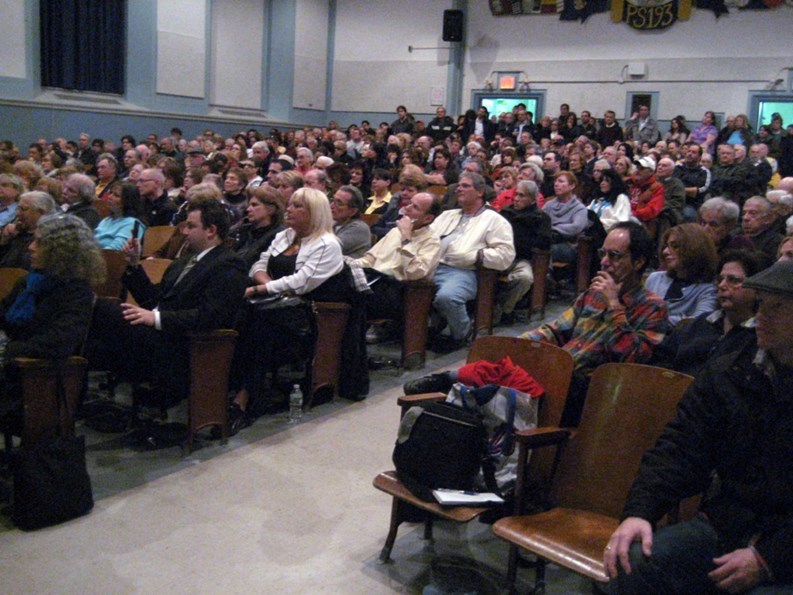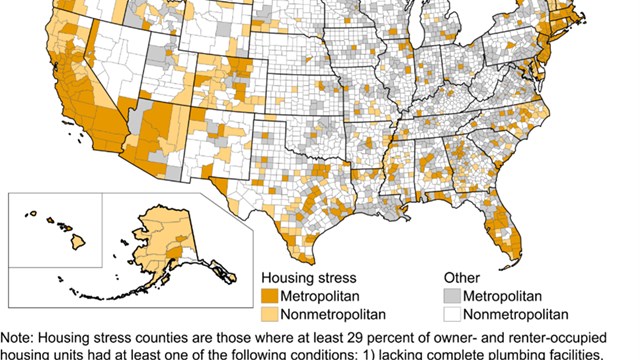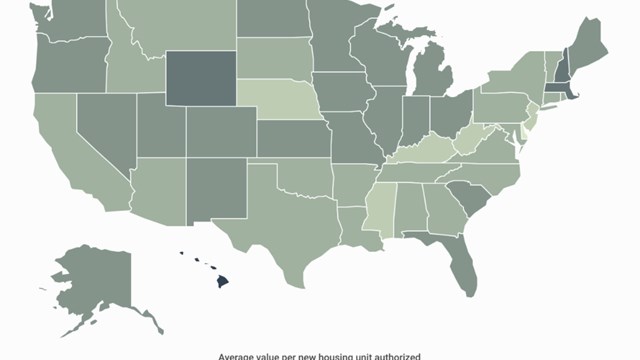When co-op developments throughout Eastern Queens received their assessment valuations this past January—the values upon which property taxes are based— many were in for a rude shock.
According to Bob Friedrich, president of Glen Oaks Village near the Queens-Nassau border and founder of the Presidents Co-op Council, which represents about 75,000 residents living in Northeast Queens co-ops, increases in the past were usually less than 10 percent. But this year however, many of them found double- and triple-digit increases.
Among the worst hit were Cryder Point and LeHavre, both in Whitestone, with 147 percent and 122 percent single-year increases, respectively. As for Glen Oaks Village, it would have to pay an 86 percent increase. (With 2,904 units, Glen Oaks Village is sometimes referred to as the city’s largest co-op. It is more accurately the city’s largest private co-op, since the state-subsidized Co-op City and Starrett City actually have more apartments.)
Contrasted with these figures, “Queens overall had an average valuation of about a 33 percent increase, and the city had an average of a 7 percent increase,” says Warren Schreiber, president of Bay Terrace Cooperative Section 1 in Bayside.
Shortly after getting word of the increases, co-op presidents and board members started calling each other and found that they weren’t really alone. Co-ops all over eastern Queens were affected—in addition to those just named, Georgetown Mews in Kew Gardens Hills, Fresh Meadows in the neighborhood of the same name, Mitchell-Linden in Flushing and others, say Friedrich and state Sen. Toby Stavisky, a Democrat who represents a wide area stretching from Bayside to Woodside, and a supporter of the cooperators.
The Presidents Co-op Council started calling meetings in the area. In addition to Sen. Stavisky, their cause was also supported by Assemblyman Ed Braunstein (a Democrat whose district covers Little Neck, Bayside and several other areas), City Councilman Dan Halloran (a Republican who represents Whitestone), City Councilman Mark Weprin (a Democrat who represents Bellerose, Oakland Gardens and several other areas) and several others. As we can see, this is a bipartisan effort.
Stavisky, speaking to The Cooperator, called it a “tax revolt.”
Already, the cooperators’ activism seems to have had some effect. In early March, for example, the city’s Department of Finance announced that it is capping at 50 percent the valuation increases it imposed on more than 2,000 co-ops. The co-ops should be getting new their new valuation increases in the near future, says Owen Stone, Department of Finance spokesman.
While co-op advocates welcome the 50 percent limit on increases in assessments as a first step, they are not necessarily satisfied with it, and plan to continue their efforts to lower the increases. They say that even a 50 percent increase would lead to a hardship for many owners.
“A 50 percent limit is a good start,” commented Schreiber, “but where did they get this arbitrary number? Did they pull it out of a hat? Some people find it kind of insulting.”
The group, he adds, plans to “keep struggling” for a better deal. “Offering us a 50 percent reduction,” Friedrich said at a recent meeting that will be further described later in this article, “is like offering someone half a glass of arsenic.”
Seniors, People on Fixed Incomes
Part of the problem lies in the nature of these developments’ cooperator base. Most are not that new—for example, Bay Terrace was built in 1975, Glen Oaks Village in 1947 and LeHavre in 1958. Some, perhaps most, were rental developments before they were converted to co-ops, and some contain remaining rental apartments even now. And most have a large percentage of senior citizens.
This resulting tax increases would have to be passed on to the cooperators in the form of increased maintenance charges, and this would be devastating to seniors and other people on fixed incomes. “It could lead to the destruction of communities,” said Friedrich, who called co-ops “the last bastion of the middle class in the city.”
While one might think that some co-ops might reduce services, such as doing with one less maintenance man, for example, most, because of the recession of the past few years, are already stretched in their expenses. “We keep a tight budget,” says Steve Day, president of Alley Pond Owners Corp., a 490-unit complex on Springfield Boulevard. Like Friedrich, Day calls co-ops “the last real affordable opportunity to reside in the city.”
Class Struggle
And complicating the problem is the method that the Finance Department uses to assess the property valuations of co-op developments. One-, two- and three-family homes fall into one category, known as “Class 1,” and are capped at 6 percent yearly increases.
But co-ops as well as condos are classed with rental apartment buildings in “Class 2.” The valuations of co-op and condo developments are, incredibly, based on comparisons with those of similar rental developments. These comparisons are called comparables, or “comps.” A comp is a real estate tool used to estimate a home or a building’s value. Comps typically contrast criteria from recently-sold properties in a neighborhood, such as sale price, age of the house or building, size, and square footage.
Lest one think that this method of classification is a mere city policy decision, Stone of the Department of Finance says it is actually part of New York state law—specifically, Law 7000-A of 1981.
What are the Eastern Queens co-ops being compared with? “Are they being compared with rental buildings in Manhattan?” Schreiber rhetorically asked. “Are they being compared to apartments in Manhattan with $5,000 a month rent, or with basement apartments that rent for $500 a month?”
Whatever methods were used to come up with these increases, he says, in some cases they could lead to property-tax increases of 30 or 40 percent—which of course would have to be passed on in monthly maintenance charges.
Friedrich, his fellow co-op president, points out that “all over the city, except in Manhattan and parts of Brooklyn, real estate values are going down.” Such huge percentage issues in assessment valuation, he adds “should have been flagged.”
Even if one does use the comp method with rental apartment to come up with these valuations, he continues, there are some rentals in Glen Oaks Village, and the increases don’t reflect the reality of the rent rolls. All in all, he says, the situation reflects “an Alice in Wonderland world.”
For her part, state Sen. Stavisky, speaking to The Cooperator, believes that this situation is another example of the city, in this case the Department of Finance, trying to produce more revenue in a year when the city has a tight budget. (Longtime New York City residents have heard similar arguments about fines for parking and traffic violations.) Stavisky herself is a longtime resident of Cryder Point.
Responding to charges such as these, Stone indicated that the increases were arrived by “standard textbook methodology” in line with the value of apartments in nearby rental apartments. The cap on valuation increases of 50 percent came after meetings between the co-op organization and the Finance Department.
Standing Room Only
On Thursday, March 10, the Presidents Co-op Council held a Town Hall meeting at P.S. 193 in Whitestone to address the problem and discuss possible legal remedies. Despite stormy weather outside, it was standing room only, with an estimated 400 to 500 people.
Sen. Stavisky and Assemblyman Braunstein, both of whom were at the meeting, plan to introduce a bill in Albany, in the Senate and Assembly respectively, that would remove co-ops and condos from Class 2 and put them in Class 1 with one-, two- and three-family homes. As we have mentioned, valuations in Class 1 properties are limited to a 6 percent yearly increase—a far cry from 147 percent, or even 50 percent. This bill appears to have wide support in the area.
Councilman Halloran was also at the meeting. If the current course of affairs continues, he said, “your maintenance costs will escalate beyond your ability to pay, and that’s a real problem.
“We’re trying to peel back the onion, but it’s not a simple onion to peel,” he said, adding that “co-ops and condos have always been second-class citizens.”
Friedrich, speaking to the crowd, questioned the method by which the Department of Finance’s auditors used to find “comp values.” It’s hard to find comparable values with rentals, he explained.
“I sent to DOF comp values of Glen Oaks Village. DOF estimated a one-year increase of 86 percent or equivalent to $81 million,” Friedrich said. “When we used the correct comps, that figure drops to $34 million. They are using inappropriate comps.”
Homeowners spoke out, too. Irene, a cooperator from LeHavre, said, “This is a double whammy. If seniors are forced out of their apartments, who is going to purchase them?”
The Presidents Co-op Council is also looking at possible legal action, and to this end has hired a Manhattan legal firm, Hankin & Mazel, whose partners, Mark Hankin and Geoffrey Mazel, have been representing condo and co-op boards for more than 20 years. Both of these attorneys were at the meeting.
No matter what happens, the city seems to have indeed awakened a tax revolt among Eastern Queens co-op owners. And it shows no signs of stopping.
Raanan Geberer is a freelance writer and editor living in New York City.







Leave a Comment